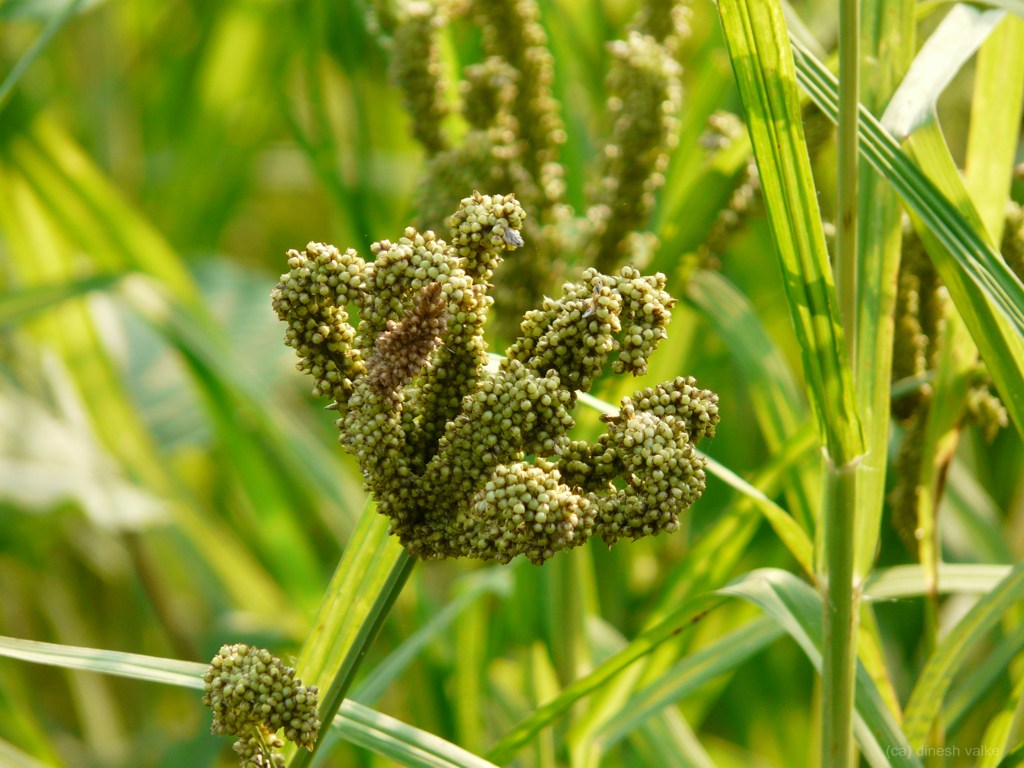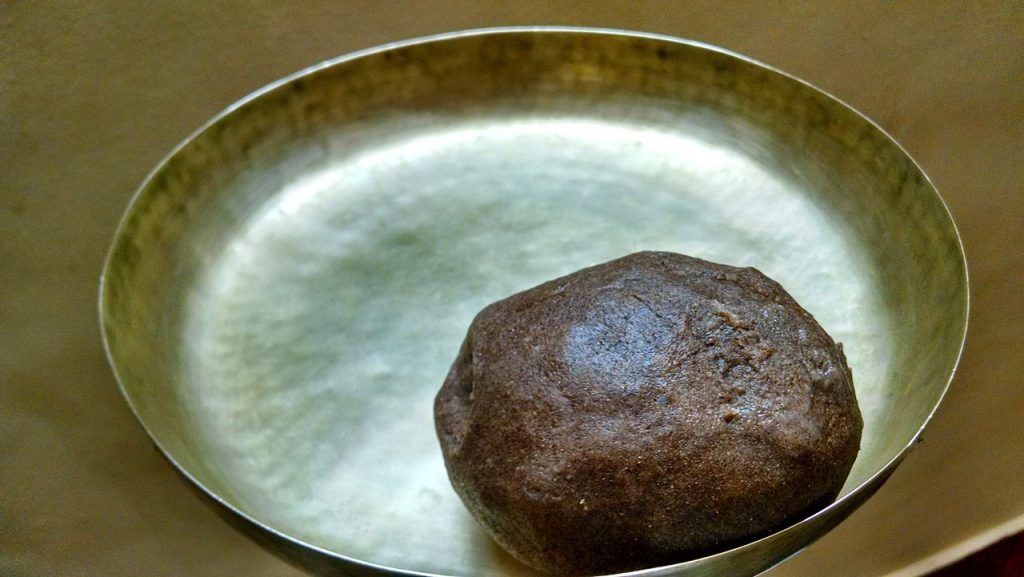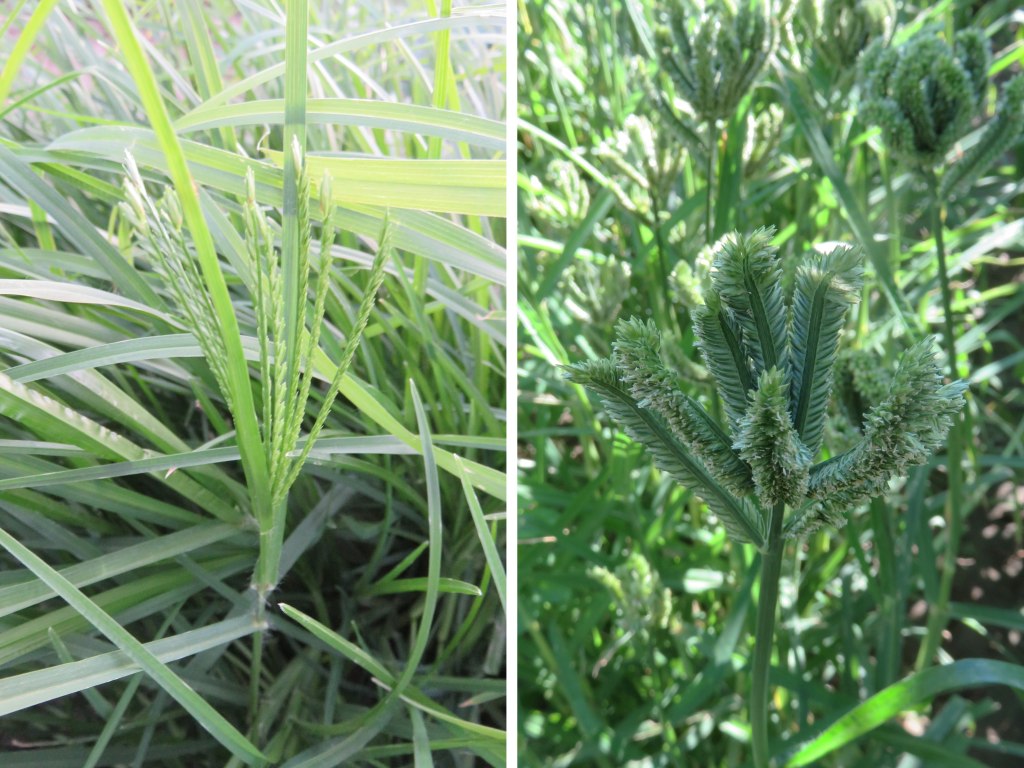Finger Millet (Eleusine coracana)
Patrick Byrne
Colorado State University, Fort Collins, Colorado 80523
Corresponding author: patrick.byrne@colostate.edu
OUTLINE
- Overview
- Origin and domestication
- Production and use
- Conservation and breeding
- International Year of Millets
- References
- Chapter information
1. OVERVIEW
Finger millet (Eleusine coracana subsp. coracana) is an annual self-pollinated tetraploid cereal crop grown for its nutritious seeds, mostly in semi-arid regions of Africa and Asia. Its common name refers to the similarity of the seed head to an upturned hand with projecting fingers. The crop is tolerant to drought, salinity, and low fertility, and has relatively few pests and diseases. Due to its climate resilience, nutritional benefits, and importance for food security of smallholder farmers, finger millet is now receiving much overdue research attention, as described by Kamenya et al. (2021), Tadele (2019), and Talabi et al. (2022).
Learn more about the state of finger millet in Western Kenya in this Crop Trust article.
2. ORIGIN AND DOMESTICATION

Domestication of E. coracana subsp. coracana from the wild progenitor E. coracana subsp. africana is believed to have occurred in the Ethiopian and Ugandan highlands about 5,000 years ago (Kamenya et al., 2021; Wikipedia, 2023). A major difference between the wild and domesticated forms is the lack of shattering (dispersal of seeds as they ripen) in the latter (van Wyk, 2005). The domesticated subspecies appeared in India during the first millennium BCE (van Wyk, 2005), and India is now considered a secondary center of diversity (Kamenya et al., 2021).
3. PRODUCTION AND USE

Finger millet, sometimes known as ragi, is an important crop of smallholder farmers in India, Nepal, and the highlands of eastern and southern Africa. The crop is usually grown rainfed in marginal areas. It is adapted to altitudes up to 2000 meters—higher than most other tropical cereals. Harvest, threshing, and winnowing of the small seed is often done by hand (van Wyk, 2005). Among the different millets, finger millet is reported to have the highest productivity (1591 kg/ha) followed by pearl millet (1130 kg/ha) (Meena et al., 2016).
The crop is resilient to many abiotic stresses, including drought, salinity, and low fertility soils (Kamenya et al., 2021), and has relatively few insect and disease problems. However, in Africa it is attacked by the parasitic weed Striga hermonthica (Kamenya et al., 2021). An additional advantage of finger millet is that the harvested grain can be stored for long periods of time without damage from insect pests, as long as it is dried to a low moisture content (Mgonja et al., 2007). This makes it an important famine food that can be stored in case of future crop failure (Rodríguez et al., 2020).
Finger millet is considered a nutritional powerhouse with high levels of calcium and other essential minerals, dietary fiber, and amino acids such as methionine (Talabi et al., 2022; Sruthi and Rao, 2021). While millets are known to be an excellent source of protein, finger millet protein levels (6.7-7.4%) are generally lower than most other millets (FAO, 2023; Sruthi and Rao, 2021). Due to its many phytochemical compounds associated with health benefits, this grain has been prescribed to manage physiological disorders such as diabetes and hypertension, and to improve gastrointestinal health (Kamenya et al., 2021).
In traditional systems, finger millet leaves and stems are used as animal fodder, while the grain is typically ground into a flour for human consumption. Finger millet flour can be cooked to produce a variety of dishes including porridge, or thick doughs and breads (Wikipedia, 2023). In Nepal it is the raw ingredient for making beer and distilled alcohol. The Millets Recipe Book (FAO, 2023) contains recipes for a variety of dishes, including a finger millet smoothie and sweet and savory snacks.
4. CONSERVATION AND BREEDING

The largest number of finger millet accessions (>10,000) is held by the National Bureau of Plant Genetic Resources in India (Kamenya et al., 2021), followed by the International Crop Research Institute for the Semi-Arid Tropics (7,519 accessions). Other large collections are held by the Genetic Resources Research Institute of Kenya (2,963 accessions), the USDA National Plant Germplasm System (738 accessions), the SADC Plant Genetic Resources Centre in Zambia (701 accessions), and the National Agriculture Genetic Resources Centre-Genebank in Nepal (679 accessions) (Genesys, 2023).
The tiny flowers of finger millet and lack of cytoplasmic male sterility have hindered hybridization between different strains of finger millet (Kamenya et al., 2021; Talabi, 2022). Nevertheless, breeding programs have been established to reduce lodging, enhance tolerance to moisture stress, improve resistance to blast disease (Magnaporthe grisea) and the parasitic weed Striga, and improve various aspects of post-harvest processing (Kamenya et al., 2021).
As was the case with many underutilized crops, modern breeding methods were slow to be applied to finger millet. However, that is starting to change. According to Kamenya et al. (2021) and Tadele (2019), methods that have been applied to finger millet include single nucleotide polymorphism mapping, speed breeding, genotyping-by-sequencing, genome-wide association analysis, and transcriptome profiling. The genome sequence of finger millet (estimated at 1.6 Gb) was first reported by Hittalmani et al. (2017). Milletdb, a multi-omics database that includes finger millet data, is described by Sun et al. (2023).
5. INTERNATIONAL YEAR OF MILLETS
The United Nations General Assembly declared 2023 the International Year of Millets (IYM 2023). In celebration of IYM 2023, the Food and Agriculture Organization held events, and released videos, recipes, and more (FAO, 2023). Below are a few short videos produced for IYM 2023 that specifically showcase finger millet and its culinary uses.
6. REFERENCES
FAO. 2023. Millets recipe book – International Year of Millets 2023. Rome. DOI: 10.4060/cc8019en
Genesys. 2023. Passport data. Genesys. Accessed 19 December, 2023. Available from: genesys-pgr.org
Hittalmani S, Mahesh HB, Shirke MD, Biradar H, Uday G, et al. 2017. Genome and transcriptome sequence of finger millet (Eleusine coracana (L.) Gaertn.) provides insights into drought tolerance and nutraceutical properties. BMC Genomics 18:465. DOI: 10.1186/s12864-017-3850-z
Kamenya SN, Mikwa EO, Song B, Odeny DA. 2021. Genetics and breeding for climate change in orphan crops. Theoretical and Applied Genetics 134:1787-1815. DOI: 10.1007/s00122-020-03755-1
Meena RP, Joshi D, Bisht JK, Kant L. 2021. Global scenario of millets cultivation. In: Kumar A, Tripathi MK, Joshi D, Kumar V (Eds.) Millets and millet technology. Springer Singapore. DOI: 10.1007/978-981-16-0676-2_2
Mgonja MA, Lenne JM, Manyasa E, Sreenivasaprasad S. 2007. Finger millet blast management in East Africa: Creating opportunities for improving production and utilization of finger millet. International Crops Research Institute for the Semi-Arid Tropics. Available from: oar.icrisat.org/307
Rodríguez JP, Rahman H, Thushar S, Singh RK. 2020. Healthy and resilient cereals and pseudo-cereals for marginal agriculture: Molecular advances for improving nutrient bioavailability. Frontiers in Genetics 11:0049. DOI: 10.3389/fgene.2020.00049
Sruthi NU, Rao PS. 2021 Effect of processing on storage stability of millet flour: A review. Trends in Food Science & Technology 112:58-74. DOI: 10.1016/j.tifs.2021.03.043
Sun M, Yan HD, Zhang AL, Jin YR, Lin C, et al. 2023. Milletdb: a multi-omics database to accelerate the research of functional genomics and molecular breeding of millets. Plant Biotechnology Journal 21:2348-2357. DOI: 10.1111/pbi.14136
Tadele Z. 2019. Orphan crops: their importance and the urgency of improvement. Planta 250:677-694. DOI: 10.1007/s00425-019-03210-6
Talabi AO, Vikram P, Thushar S, Rahman H, Ahmadzai H, et al. 2022. Orphan crops: A best fit for dietary enrichment and diversification in highly deteriorated marginal environments. Frontiers in Plant Science 13:839704. DOI: 10.3389/fpls.2022.839704
van Wyk E-B. 2005. Food crops of the world. Timber Press, Portland, OR. p. 187.
Wikipedia. 2023. Eleusine coracana. Wikipedia. Accessed 19 December, 2023. Available from: wikipedia.org/wiki/Eleusine_coracana
7. CHAPTER INFORMATION
Chapter citation: Byrne P. 2023. Finger Millet (Eleusine coracana). In: Chen K, Byrne P (Eds.) Understudied Indigenous Crops. Fort Collins, Colorado: Colorado State University. Date accessed. Available from https://colostate.pressbooks.pub/understudiedindigenouscrops/chapter/finger-millet/
Chapter editor: Katheryn Chen

